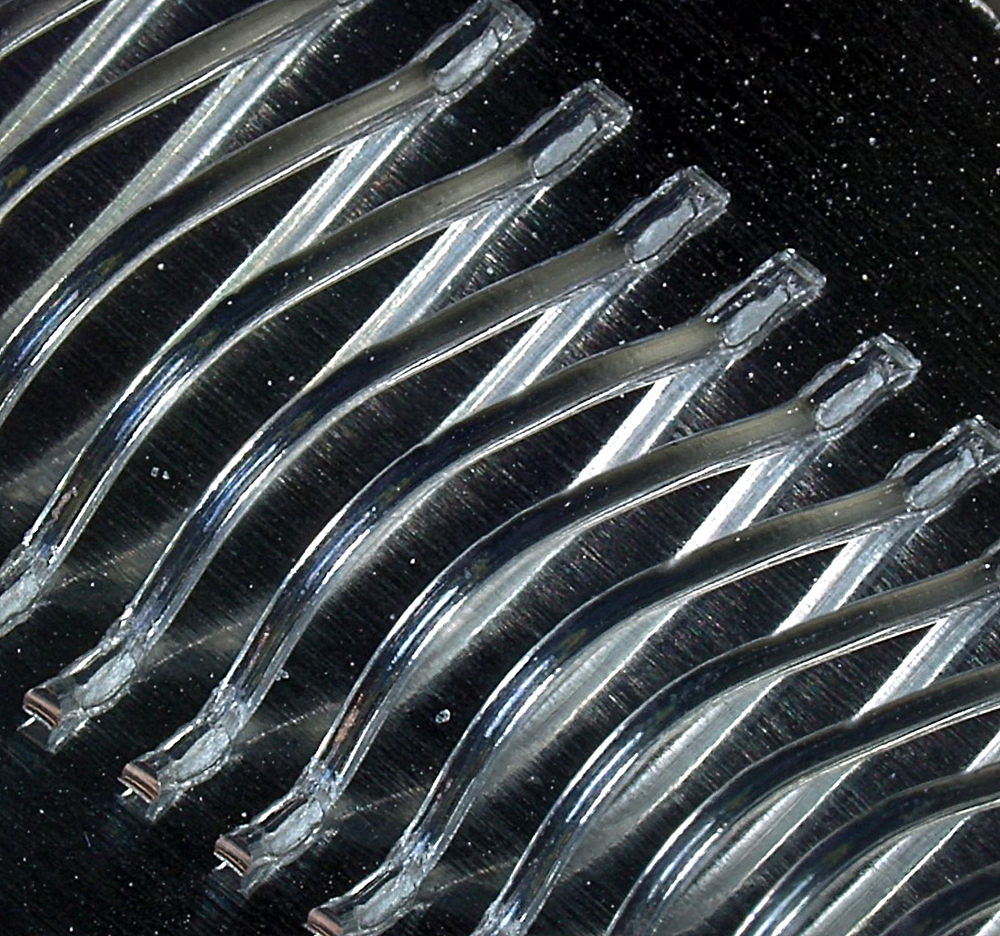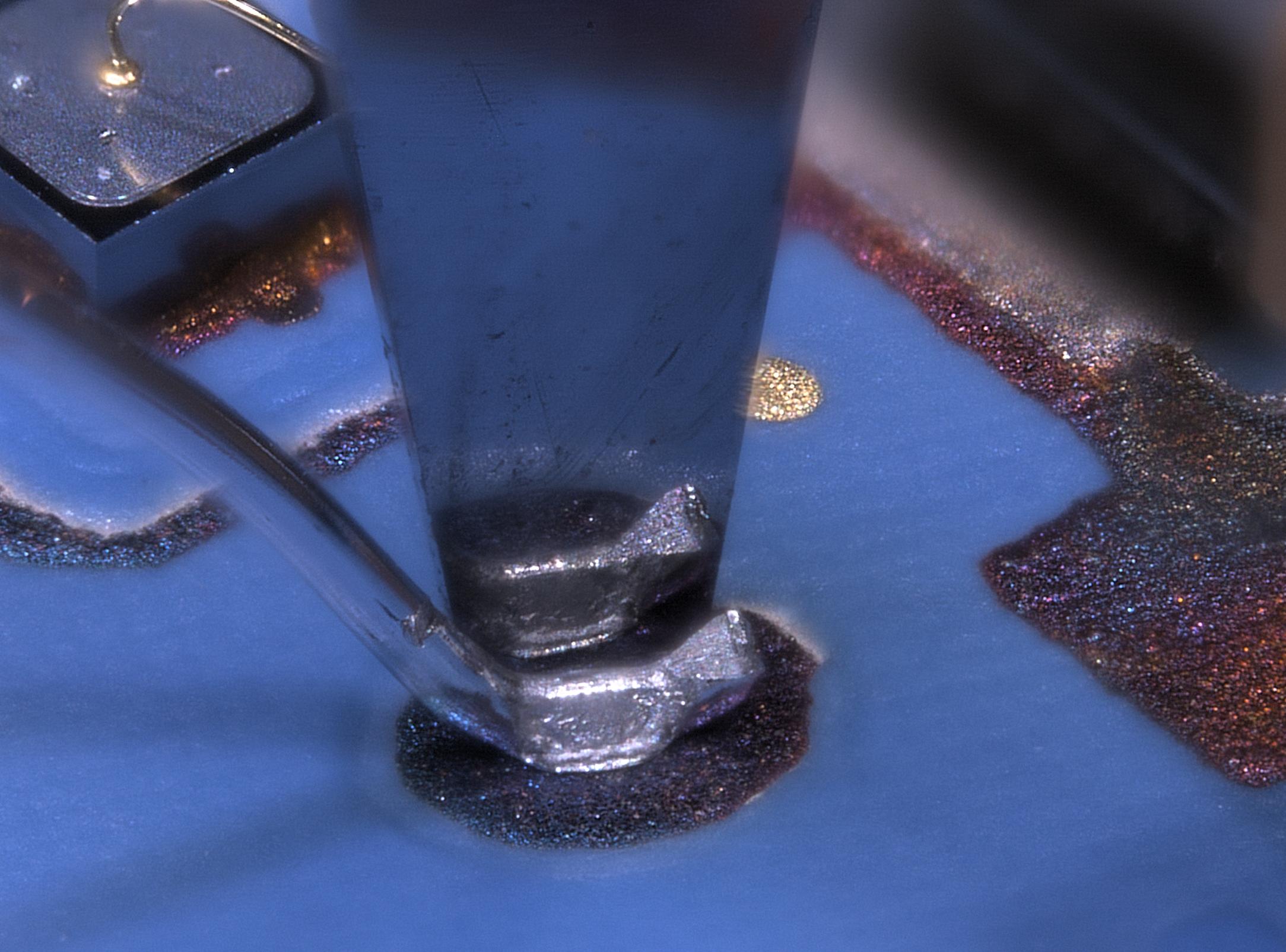New materials are also used in the smallest of dimensions such as in wire bond contacts, which are found in chips, electronic components, as well as electric interfaces and those which connect circuits. Heavy wire bond technology for connecting power semiconductors is used in the constantly growing power electronic application fields such as that of alternative energy production and electrification of vehicles.



Here, aluminum (Al) heavy wire is used almost exclusively for bonding. Apart from the usual ultra-pure and pure types of aluminum, innovative aluminum wire materials as well as aluminum coated heavy copper wires are increasingly being used. These have the advantages that they are corrosion resistant, have higher strength and are thermally stable. This results in these materials having a service life up to ten times longer.
To examine bonding quality, standard mechanical tests, such as so-called pull and shear tests, are carried out during process optimization as well as during manufacturing. For the latter method, the contact is pushed with a chisel to a specific height in the bonding point and is thus separated. After that, specific quality features such as shearing force and fracture patterns, found as a result of the test (a so-called shearing code), are evaluated. New and further development of wire materials and the changes in mechanical properties connected with this, however, affect the results of the shear tests: The interpretation of the test results and the evaluation criteria for good/bad classification of bonding quality used to date must be modified.
In the course of the current AiF research project ‘Correlation of shear test results and reliability of fine crystalline aluminumbased heavy wire bond contacts‘ the Fraunhofer Institute for Microstructure of Materials and Systems IMWS in cooperation with the Fraunhofer Institute for Reliability and Microintegration IZM is developing a fundamental knowledge base on the microstructural property relationships of bond contacts.
This forms the conditions upon which universal assessment and evaluation guidelines for shear test results may be defined. The minimum of required shear power values is achieved without problem for the new, reliability optimized wire materials. However, shear codes are a challenge, as they are significantly altered compared to conventional wires. Based on current evaluation criteria these may represent inadmissible material reactions so that insufficient connectivity and therefore poor bonding quality is assumed. Hence, no universal assessment and evaluation guidelines for the new wire qualities exist as far as shear test results are concerned. An elementary part of quality management thus remains outstanding.
Since output quality always affects durability, a new definition of admissible criteria with regards to shearing force and shear code for heavy wire materials is urgently required. A central question remains of how shearing results and, with this, bonding quality can be reliably assessed in future, considering the large range of available raw materials. The research project is developing various test patterns for this, whereby raw materials are examined and contacts undergo the shear test in various stages of maturation. The microstructure of the contact zone is also analyzed at every stage in order to relate it to the shear test results.
The scientists are examining the microstructural and mechanical processes of bond connections with the shear test. The aim is to establish the interrelation of shear test result, structure and bonding quality as well as their impact on durability, which has to be predicted. These results will later be included in leaflets and/or standard guidelines.
The project is funded by the Federal Ministry for Education and Research BMBF. The AiF Consortium for Industrial Research is lead partner. The project was submitted via the research alliance DVS – Deutscher Verband für Schweißen und verwandte Verfahren e.V. (The German Association for Welding and Related Processes).